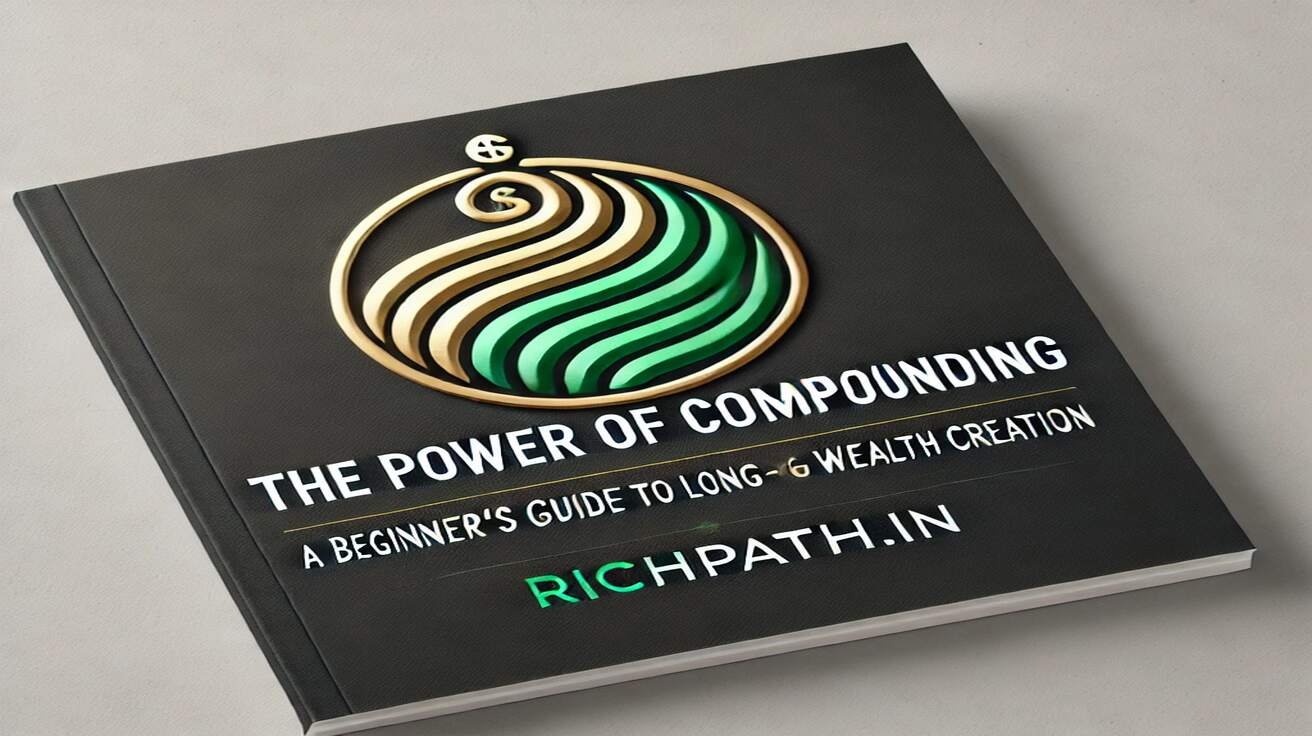The Power of Compounding: A Beginner’s Guide to Long-Term Wealth Creation

The Power of Compounding:
Building wealth is a goal that resonates with almost everyone, yet the path to achieving it often seems complex and elusive. Among the myriad strategies and financial principles available, one concept stands out as a cornerstone of long-term wealth creation: The power of compounding. Described by Albert Einstein as the “eighth wonder of the world,” the Power of compounding has the power to transform modest savings into significant wealth over time. This guide delves into the principles of compounding, its impact on financial growth, and how you can harness it to secure your financial future.
Understanding the Concept of The Power of Compounding:
At its core, compounding is the process of earning returns on both the money you invest and the returns that accumulate over time. Unlike simple interest, where only the initial investment grows, compound interest allows your money to grow at an accelerating rate. This “snowball effect” is the secret sauce that makes compounding such a powerful wealth-building tool.
For instance, if you invest $1,000 at an annual interest rate of 10%, you would earn $100 in the first year. In the second year, instead of earning another $100, you earn $110 because your returns from the first year ($100) also earn interest. Over time, this Power of compounding effect can result in exponential growth, provided you give it enough time to work its magic.
The Role of Time in Compounding
Time is the most critical factor in maximizing the benefits of compounding. The longer you allow your investments to grow, the more pronounced the compounding effect becomes. Starting early is essential, even if you begin with a small amount. Delaying your investment journey by even a few years can result in a significant opportunity cost.
Consider this example: Imagine two individuals, Alex and Brian. Alex starts investing $5,000 annually at the age of 25 and continues until he is 35, contributing a total of $50,000. Brian, on the other hand, starts investing $5,000 annually at the age of 35 and continues until he is 65, contributing a total of $150,000. Assuming an annual return of 8%, Alex will have more money by the time they both reach 65, despite contributing only a third of what Brian invested. This is the power of starting early and letting compounding work over time.
Compounding in Different Investment Avenues
Compounding is not limited to fixed deposits or savings accounts; it plays a significant role in various investment avenues. Here’s how compounding operates across different financial instruments:
1. Stocks and Equity Mutual Funds
When you invest in stocks or equity mutual funds, the returns generated are reinvested, allowing your investment to grow exponentially over time. For example, dividends from stocks can be reinvested to purchase more shares, leading to higher future returns. Historical data shows that equity markets have the potential to deliver inflation-beating returns, making them an excellent choice for long-term compounding.
2. Fixed Deposits and Bonds
Fixed deposits and bonds also benefit from compounding, especially when you opt for cumulative options. While the returns are typically lower than equities, these instruments offer stability and predictability, making them suitable for risk-averse investors.
3. Real Estate
Compounding works in real estate when property values appreciate over time and rental income is reinvested. Although real estate investments may require substantial initial capital, they can yield impressive long-term returns if managed wisely.
4. Retirement Accounts
Investments in retirement accounts like NPS or the Public Provident Fund (PPF) leverage compounding by allowing your contributions and returns to grow tax-free or tax-deferred. This maximizes your wealth over decades, ensuring a comfortable retirement.
Overcoming Common Barriers to Compounding
While the concept of compounding is simple, many people fail to take full advantage of it due to certain barriers. Let’s address these hurdles and explore how to overcome them:
1. Procrastination
The most significant barrier to compounding is the tendency to delay investing. Many people believe they need a substantial amount of money to start, but even small, consistent contributions can lead to significant wealth over time. Start with what you can afford and increase your contributions as your income grows.
2. Impatience
Compounding is a long-term game that requires patience. In today’s fast-paced world, where instant gratification is the norm, it’s easy to get discouraged by slow initial growth. Remember, the most significant gains occur in the later stages, so stay committed to your investment strategy.
3. Lack of Financial Discipline
Frequent withdrawals from your investment can disrupt the compounding process. Maintain financial discipline by creating an emergency fund to cover unexpected expenses, ensuring you don’t dip into your investments unnecessarily.
Strategies to Maximize the Power of Compounding
To harness the full potential of compounding, follow these actionable strategies:
1. Start Early
As highlighted earlier, time is your greatest ally. Begin investing as soon as possible, even if the initial amount is small. The earlier you start, the more time your money has to grow.
2. Be Consistent
Consistency is key to successful compounding. Make regular contributions to your investment portfolio, regardless of market conditions. Automating your investments through systematic investment plans (SIPs) can help maintain discipline.
3. Reinvest Returns
Avoid the temptation to withdraw your returns. Reinvesting dividends, interest, or profits accelerates the compounding process and maximizes growth.
4. Diversify Your Portfolio
While compounding can work wonders, it’s essential to diversify your investments to mitigate risks. A well-balanced portfolio ensures steady growth while protecting against market volatility.
5. Monitor and Adjust
Although compounding thrives on consistency, it’s important to periodically review your investment strategy. Ensure your portfolio aligns with your financial goals and risk tolerance, making adjustments as needed.
Real-Life Examples of The Power of Compounding:Success
History is replete with stories of individuals who built extraordinary wealth through compounding. One of the most notable examples is Warren Buffett, one of the world’s wealthiest individuals. Buffett started investing at the age of 11 and allowed his investments to compound over decades. His strategy of patience, consistency, and reinvestment underscores the immense power of compounding.
Similarly, consider the example of an average individual who invests $200 per month in a mutual fund with an annual return of 10%. Over 30 years, this modest monthly contribution grows to over $450,000, showcasing how small, consistent investments can lead to substantial wealth.
The Psychological Benefits of Compounding
Beyond financial growth, compounding also has psychological benefits. Watching your investments grow over time can instill a sense of financial security and confidence. It reinforces the value of patience and discipline, teaching you to focus on long-term goals rather than short-term market fluctuations.
Moreover, compounding can reduce financial stress by ensuring a steady path toward wealth creation. Knowing that your money is working for you, even while you sleep, provides peace of mind and allows you to focus on other aspects of life.
Conclusion: Start Your Compounding Journey Today
The power of compounding is both simple and profound. It doesn’t require advanced financial knowledge or large sums of money—only time, patience, and consistency. By starting early, reinvesting returns, and maintaining discipline, you can unlock the full potential of compounding and achieve your long-term financial goals.
Remember, every day you delay is an opportunity lost. Begin your compounding journey today, no matter how small the initial step may seem. Over time, you’ll witness the extraordinary transformation of your savings into a substantial wealth corpus, empowering you to live the life you’ve always envisioned.
By understanding and leveraging the power of compounding, you take control of your financial destiny. Let today be the day you set the foundation for a prosperous tomorrow.
If you found this article helpful, visit Richpath.in for more in-depth resources on financial education and investing. Don’t forget to share this article with friends and family who might benefit from it, and let us know in the comments which book you’re planning to read first or suggest topics you’d like us to cover!
Read more –
How Long-Term Investments Can Secure Your Retirement
How to Plan Your Retirement in Your 40s with Just ₹1,000 Monthly Using Mutual Funds









1 COMMENTS